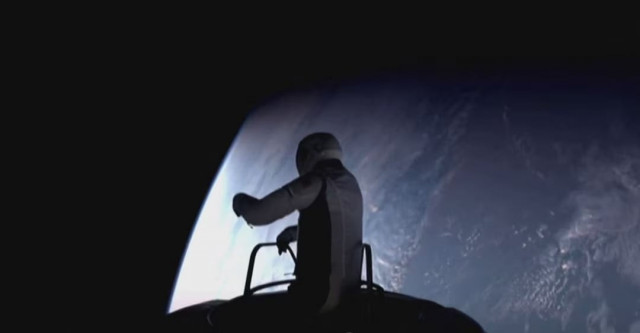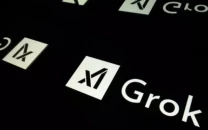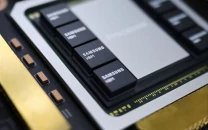SpaceX achieves unprecedented feat in commercial space travel
Mission Polaris Dawn sees two private astronauts step into orbit, paving the way for future space missions to Mars

Two astronauts, a billionaire and an engineer, completed the first private spacewalk in orbit on Thursday outside a SpaceX capsule. They wore a new type of spacesuit in a high-risk feat once limited to astronauts from government space agencies.
As part of the Polaris Dawn mission, the astronauts each spent about 10 minutes outside the Crew Dragon capsule, tethered for safety, while their two crewmates remained inside. The mission, led by Elon Musk's SpaceX, further pushed the boundaries of private space travel.
Jared Isaacman, a pilot and founder of Shift4, was the first to exit, followed by SpaceX engineer Sarah Gillis. Meanwhile, their crewmates Scott Poteet and Anna Menon observed from inside the capsule. Orbiting about 450 miles (730 km) above Earth, the entire spacewalk lasted one hour and 46 minutes.
Isaacman, who also funded the Polaris mission, previously financed his Inspiration4 flight with SpaceX in 2021. The mission, streamed live on SpaceX's website, tested new equipment, including slimmer spacesuits and a procedure to fully depressurise the Crew Dragon cabin – technology that Musk aims to refine for future private missions to Mars.
After re-entering the spacecraft, Isaacman commented on Earth's beauty, as seen from space. This mission was one of the riskiest for SpaceX, the only private company capable of regularly sending people into orbit and back.
Before the spacewalk at around 10:52 GMT, the capsule was completely depressurised, with the astronauts relying on their SpaceX-designed spacesuits for oxygen via an umbilical connection to the capsule. Isaacman, 41, and Gillis, 30, tested the suits' flexibility and provided feedback to improve future designs.
The mission aimed to push the limits of private companies in space, with ground teams at SpaceX’s California headquarters monitoring the hatch’s closure and carrying out safety checks as the astronauts returned inside.
The spacewalk procedure echoed that of the first US spacewalk in 1965, which involved depressurising the capsule and tethering a spacesuited astronaut to it. NASA Administrator Bill Nelson hailed the mission as a "giant leap forward" for the commercial space industry and NASA's goal of building a sustainable US space economy.
While Isaacman has not revealed the mission’s cost, it is expected to run into hundreds of millions, with Crew Dragon seats typically costing around $55 million each.
Gillis, who joined SpaceX as an intern in 2015, and Poteet, a retired US Air Force lieutenant colonel, were among the crew, along with SpaceX engineer Anna Menon. Throughout the mission, the spacecraft circled Earth multiple times, reaching altitudes of up to 1,400 km, the farthest humans have travelled in space since Apollo's final mission in 1972.
Spacewalks have previously been conducted solely by government-trained astronauts. Since the International Space Station (ISS) was established in 2000, there have been around 270 spacewalks, with 16 on China’s Tiangong space station.
The Polaris crew spent two and a half years training, including mission simulations and challenging real-world experiences, to prepare for the mission, according to Poteet.
Currently, a record 19 astronauts are in orbit, including 12 aboard the ISS, after a Russian Soyuz mission transported additional astronauts there on Wednesday. Since 2001, Crew Dragon has completed more than a dozen astronaut missions, primarily for NASA.
The capsule was developed under a NASA programme to create commercial vehicles for transporting astronauts to and from the ISS. Boeing’s Starliner capsule, also part of this programme, launched its first astronauts to the ISS in June but faced difficulties. It returned empty, leaving its crew aboard the station until next year, when a Crew Dragon capsule will retrieve them.



















COMMENTS
Comments are moderated and generally will be posted if they are on-topic and not abusive.
For more information, please see our Comments FAQ